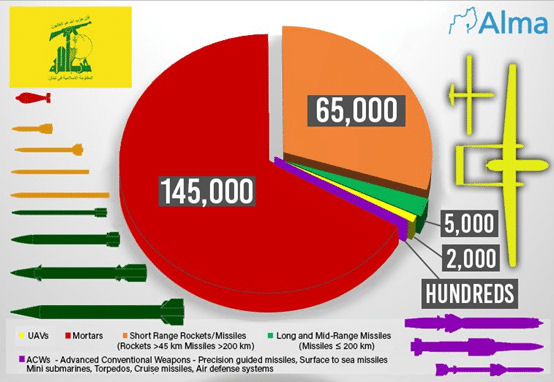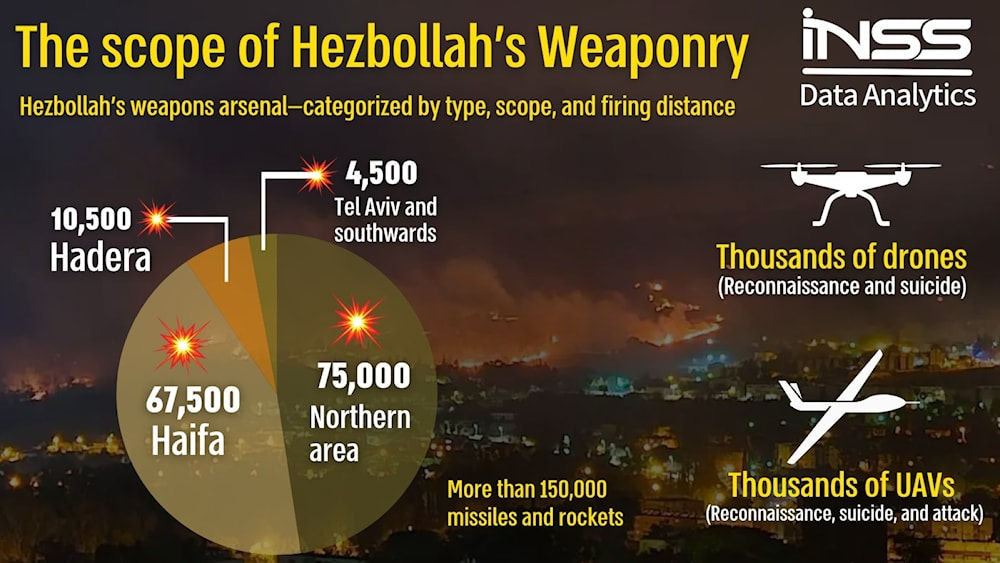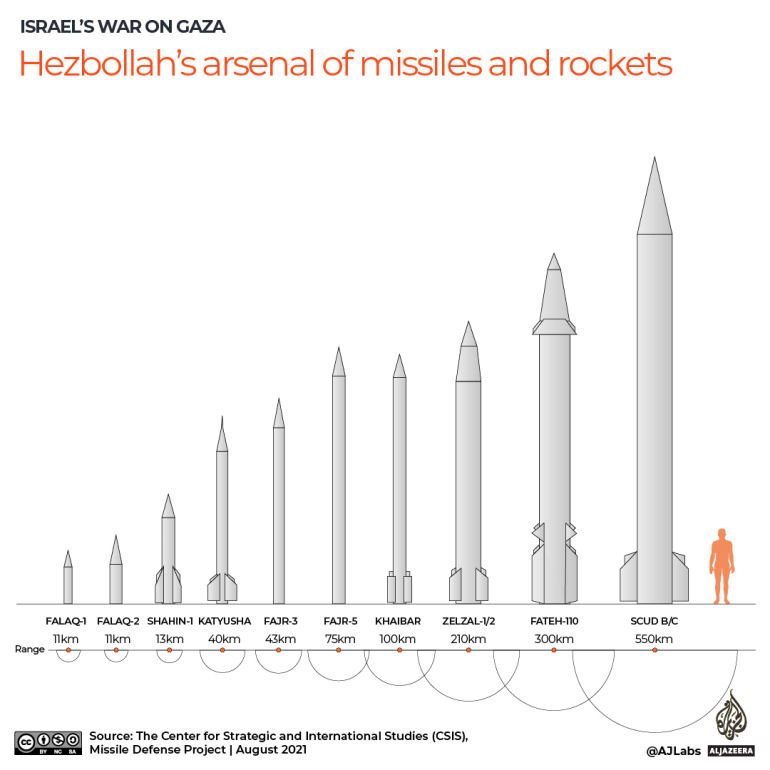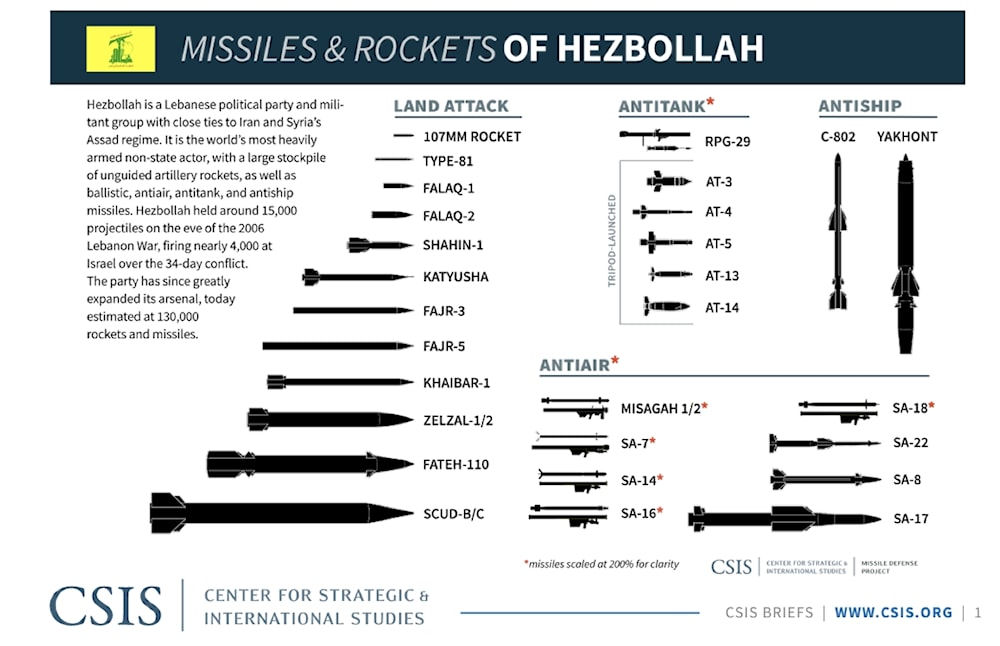Hizballah Rockets
The rocket arsenal of Hizballah has been widely and vastly exaggerated. At some point, threat inflation translates into self-deterrence. Generally, the frequently cited total inventory of 100,000 to 150,000 rockets and missiles is reported without qualification. When present, commonly seen qualifications include "some of which are long-range" and "missiles able to strike deep within Israel". But when taken with reports of teh introduction of precision guidance, the take-away impression is of a stockpile that dwarfs that of the rest of humanity combined. For the Unied States, annual produciton of medium range precision missiles is typically denominated in the high hundreds or low thousands. Gee whiz!! Lions and Tigers and Bears, Oh My!!
A much better estimate is that the 100,000+ total includes all major caliber projectiles capable of attacking Israeli territory from Lebanon. Since the two countries are next to each other, no great range is required. Most of this total consists of mortar rounds, little more than hand grenades lobbed over the border [in all other militaries, such projectiles are classified as "ammunition", a class distinct from "missiles"]. Moving south into Israel, the warheads get bigger, some much bigger, but the number of rockets [properly considered], dwindles rapidly.
Colonel Dan Goldfus, commander of the 769th Hiram Infantry Brigade, said in September 2014 that Hizballah had an estimated 100,000 rockets — 10 times as many as were in the Hamas arsenal — and that its 5,000 long-range missiles, located in Beirut and other areas deep inside Lebanon, were capable of carrying large warheads (of up to 1 ton and more), with precision guidance systems, covering all of Israel.
According to the IDF "July 12, 2006: Hezbollah terrorists attack an IDF patrol, kill three IDF soldiers and kidnap two. Israel goes to war. In the next 33 days, Hezbollah fires approximately 4,000 rockets into Israel. Hezbollah killed a total of 119 IDF soldiers and 44 Israeli civilians during the war. In 2006, Hezbollah's arsenal consisted of 20,000 rockets and missiles. In 2013, Hezbollah's arsenal consists of 100,000 rockets and missiles."
Al-Jazeera reported 25 Septembe 2024 that "Hezbollah is considered to be one of the world’s most heavily armed non-state actors, with an estimated rocket arsenal of 130,000, according to CSIS. On October 19, Israel’s Institute for National Security Research estimated that Hezbollah had 40,000 Grad-type missiles with a short range of 15-20km (9-12 miles). A step up are 80,000 longer-range missiles, including the Fajr 3 and Fajr 5 ballistic missiles, with a range of 100km (62 miles). Finally, there are about 30,000 Zelzal or Fateh-110 missiles with a range of 200-300km (124-186 miles) – the longest-range weapons in Hezbollah’s inventory, capable of reaching southern Israel." Israeli media reported 19 February 2024 that Hezbollah was advancing toward precision in its missiles, as a kind of alternative to an air force. The Israeli army concluded from the daily operations of the Islamic Resistance in Lebanon towards Israeli positions and concentrations of Israeli soldiers that Hezbollah had transformed Grad rockets and other short-range rockets into a guided and accurate weapon.
The Israeli media also noted that "Hezbollah possesses dozens of Fateh 110 precision missiles and several hundred other precision munitions, including short-range rockets, mobile missiles, surface-to-air missiles, and others." On another level, Israeli media revealed that “the internal front in northern occupied Palestine fears the outbreak of a comprehensive war, since the last speech of Sayyed Nasrallah, and the implications of what was stated in it.” She added, "Nasrallah's threat of missiles capable of reaching Eilat, south of occupied Palestine, prompted thousands of Israeli settlers to rush to stores, fearing a shortage of basic materials."
The Israeli Channel 12 stated, "It is expected that the northern front will witness additional days of fighting, especially after the Secretary-General of Hezbollah promised a very harsh response." The channel added, "For this reason, there is high alert and readiness in the field on the northern border. We are all the time on the brink of war." The head of the local authority in the Kiryat Shmona settlement, Avichai Stern, who is located there, said that the settlers, after 4 months, “are in an unbearable situation and under terrible pressure.” In turn, the head of the Margaliot Council, Eitan Davidi, said that the situation in the settlement is “unreasonable, and residents cannot enter and leave whenever they want,” adding: “We cannot maneuver. We hide behind walls when we are in Margaliot.”
Sayyed Nasrallah had stressed, in his speech on the occasion of the anniversary of the martyred leaders, that “the price of civilian blood will be blood, not Israeli sites, mechanisms, and spy devices.” This was after the massacre committed by the Israeli army in the southern city of Nabatieh, which claimed the lives of 11 martyrs, including women and children. Regarding the military arsenal possessed by Hezbollah, Sayyed Nasrallah affirmed that “the resistance in Lebanon possesses a tremendous and accurate missile capability that extends from Kiryat Shmona to Eilat,” thus putting the entire occupied Palestinian territories and Israeli targets in the line of fire.
Contrary to previous assessments reporting an arsenal of 180,000 projectiles, i24 TV News reported 08 September 2024 that Israeli intelligence services estimate, that before the 25 August 2024 strike, Hezbollah had only 40,000 short-range rockets and 5,000 medium-range rockets. The current estimates by the IDF indicate that nearly a fifth of Hezbollah's short-range rockets had been neutralized.





